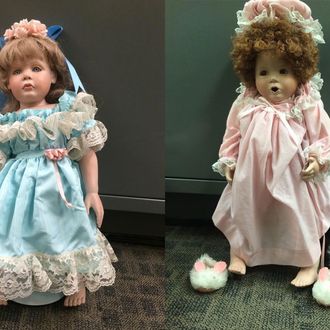
On the whole, humans are a social species, but our reaction to seeing other humans varies hugely depending on who we are and how we’re feeling at a given moment. Sometimes all we want is another person to talk to, while other times we want to be alone. These aren’t blazing insights, but there’s still a lot researchers don’t know about how we respond to companionship (or a lack thereof), and an interesting new study in Psychological Science unpacks the cognitive dynamics of this a bit.
The Association for Psychological Science explains:
[Lead researcher Katherine Powers of Dartmouth] and colleagues had 30 college students view images of faces, which were actually morphs created by combining inanimate faces (such as a doll’s face) with human faces. The morphs ranged from 0% human to 100% human and showed both male and female faces.
The morphs were presented in random order and the students had to decide whether each face was animate or inanimate. Afterwards, they completed a survey that gauged their desire for social connections, in which they rated their agreement with statements such as “I want other people to accept me.”
Sure enough, the students who desired more social connection had a lower threshold at which they viewed those morph faces as real faces. To test this further, the researchers manipulated the experiment so another group of students was told, before taking the morphed-faces test, either that they would be lonely in the long term, or that they’d have meaningful and stable relationships. (That’s a mean experiment.) “As expected, students who had been told they would be isolated and lonely showed lower thresholds for animacy than those who were told they would have long-lasting relationships.”
“Even though two people may be looking at the same face,” explained Powers in the press release, “the point at which they see life and decide that person is worthy of meaningful social interaction may not be the same — our findings show that it depends on an individual’s social relationship status and motivations for future social interactions.”




